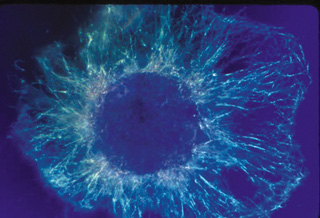
The image above shows a dividing cell from an African globe lily (Andrew S. Bajer, University of Oregon, Eugene. Image from NIGMS image gallery).
Instructor(s)
Dr. Folkert van Werven
Dr. Alexi Goranov
MIT Course Number
7.342
As Taught In
Fall 2012
Level
Undergraduate
Course Description
Course Description
Cells, regardless of whether they are in an organ in the human body or a component of a bacterial colony, can sense the chemical composition of the environment, the presence of neighboring cells, and even the types of their neighboring cells. Depending on the identity of a cell and the information it receives from its environment, it can grow (increase in size), proliferate (make more cells), become quiescent (stop growing and dividing), differentiate (make different types of cells), or die. How cells achieve the astonishing feat of appropriately sensing and responding to their environment has been a major question in biology. In this course we will read and critically discuss the primary scientific literature with the goal of highlighting the basic principles of cell growth, adaptation, and differentiation.
This course is one of many Advanced Undergraduate Seminars offered by the Biology Department at MIT. These seminars are tailored for students with an interest in using primary research literature to discuss and learn about current biological research in a highly interactive setting. Many instructors of the Advanced Undergraduate Seminars are postdoctoral scientists with a strong interest in teaching.


